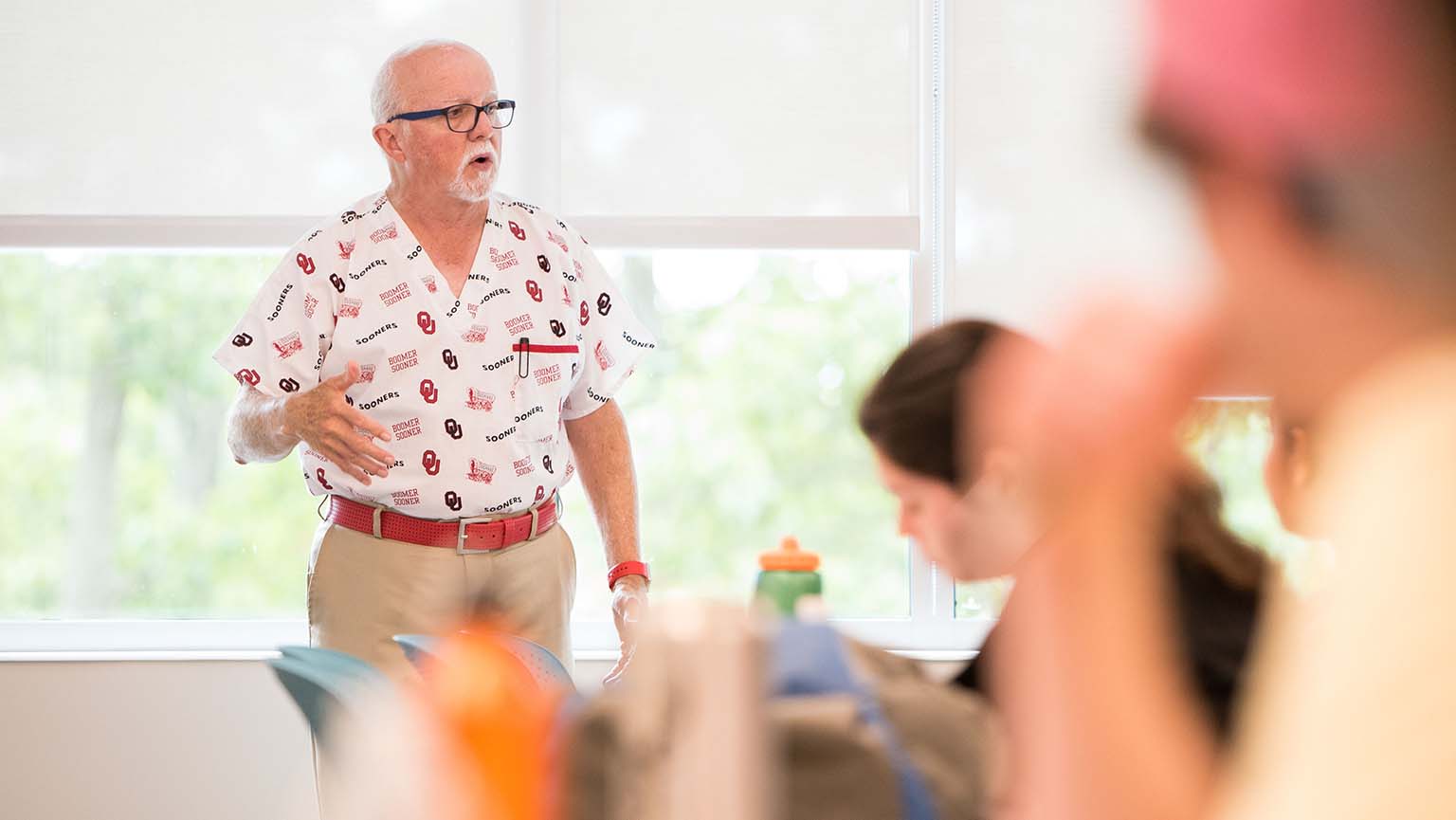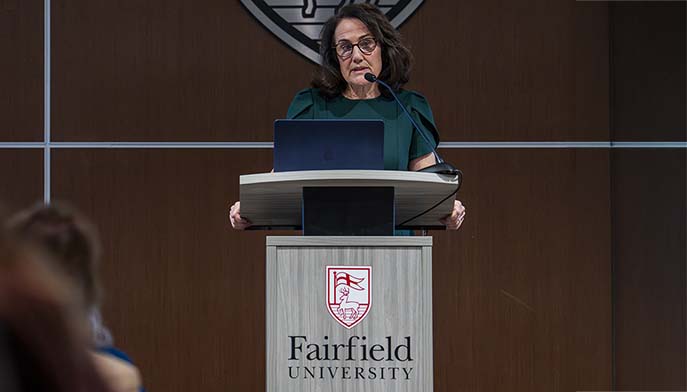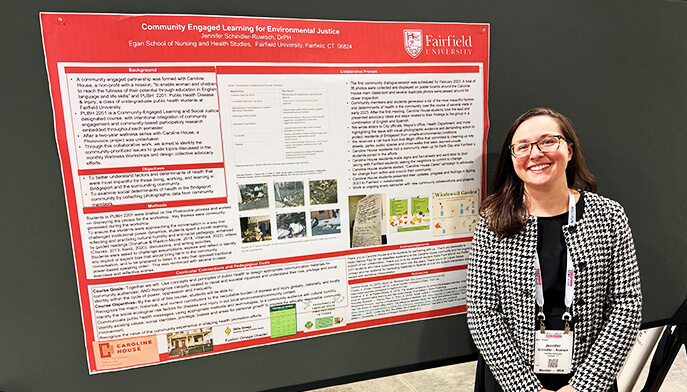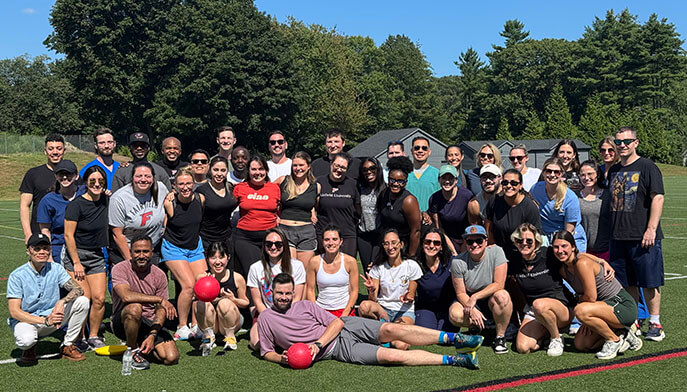Dr. Pagano helps students explore the human side of healthcare in his popular course on end-of-life communication.
Professor Michael Pagano, PhD, became a physician assistant after serving his country as an Army medic in Vietnam. The Oklahoma native so enjoyed the patient education aspect of the job that he eventually returned to school to earn a master’s degree in English and a doctorate in communication. A professor in the John Charles Meditz College of Arts and Sciences, Dr. Pagano has for two decades combined his passions for education and healthcare by teaching courses in health communication.
One of Dr. Pagano’s most popular courses is “End-of-Life Communication.” The curriculum for the community-engaged learning course includes 20 volunteer hours at Mosaic Hospice in Bridgeport, Conn., where students interact with dying patients and their families. The service component encourages students to apply classroom knowledge to real-world scenarios and to analyze communication theories and behaviors in an end-of-life context.
Dean Hartl ’25, who earned his degree in social work, planned his schedule around the course. “Death is a very human thing that we will all face, and I wanted to learn more about it from a personal and professional perspective,” he said.
The course taught him a lot about relationships. “Even though those patients will die, and even though my time at the hospice came to an end, that doesn’t mean the relationships were meaningless,” he said. “Those interactions are like waves in the ocean of care. They dissipate but are still a part of us.”
Inspired by Dr. Pagano’s course, Hartl and his classmates organized a Death Café on campus to talk about death and dying. Now an annual event, the gathering is co-sponsored by the Department of Communication and the Marion Peckham Egan School of Nursing and Health Studies’ Kanarek Center for Palliative Care.
Dr. Pagano collaborates often with faculty members in the Egan School. One frequent collaborator with whom he co-teaches a study abroad course is Eileen O’Shea, DNP, APRN, PCNS-BC, CHPPN, professor of nursing and director of the Kanarek Center.
Initially offered in Galway, Ireland, but now taught in Florence, Italy, “Palliative Care Communication” is a four-week course for undergraduate and graduate students in select programs— including nursing, public administration, communication, and health professions— who wish to explore palliative care communication from intercultural and interdisciplinary perspectives.
Dr. O’Shea admits that she was apprehensive at first about teaching the course, largely because interdisciplinary audiences have such varied interests, but her concerns were assuaged by Dr. Pagano’s conviction that every student, regardless of major or intended profession, needs the information and skills taught in the course.
“He helped me realize that the ability to have open and compassionate discussions with various student groups, about serious illness and end-of-life care, is an essential skill that everyone can benefit from,” said Dr. O’Shea.
Students have praised the course for nurturing their intellectual and emotional growth, inviting a deeper understanding of the role of communication in providing compassionate care.




